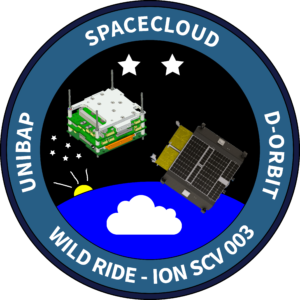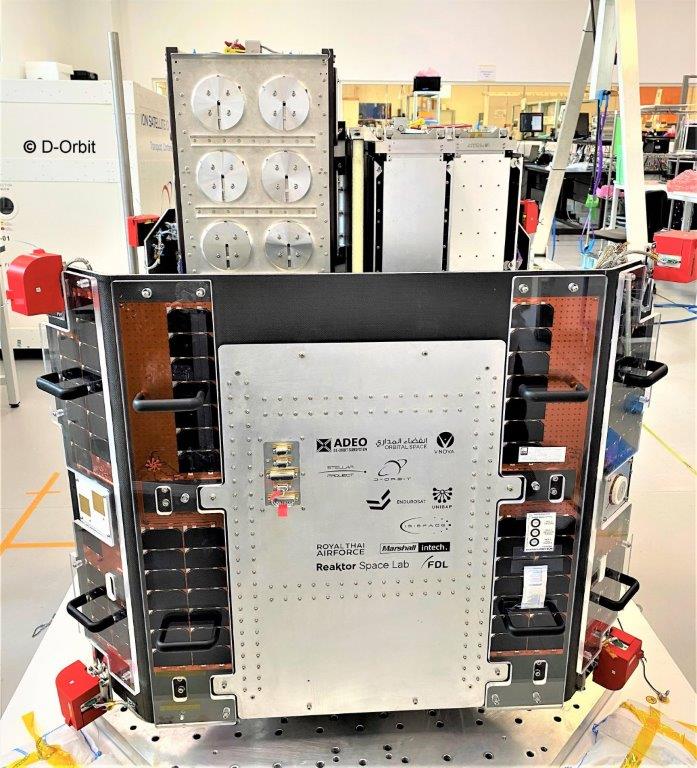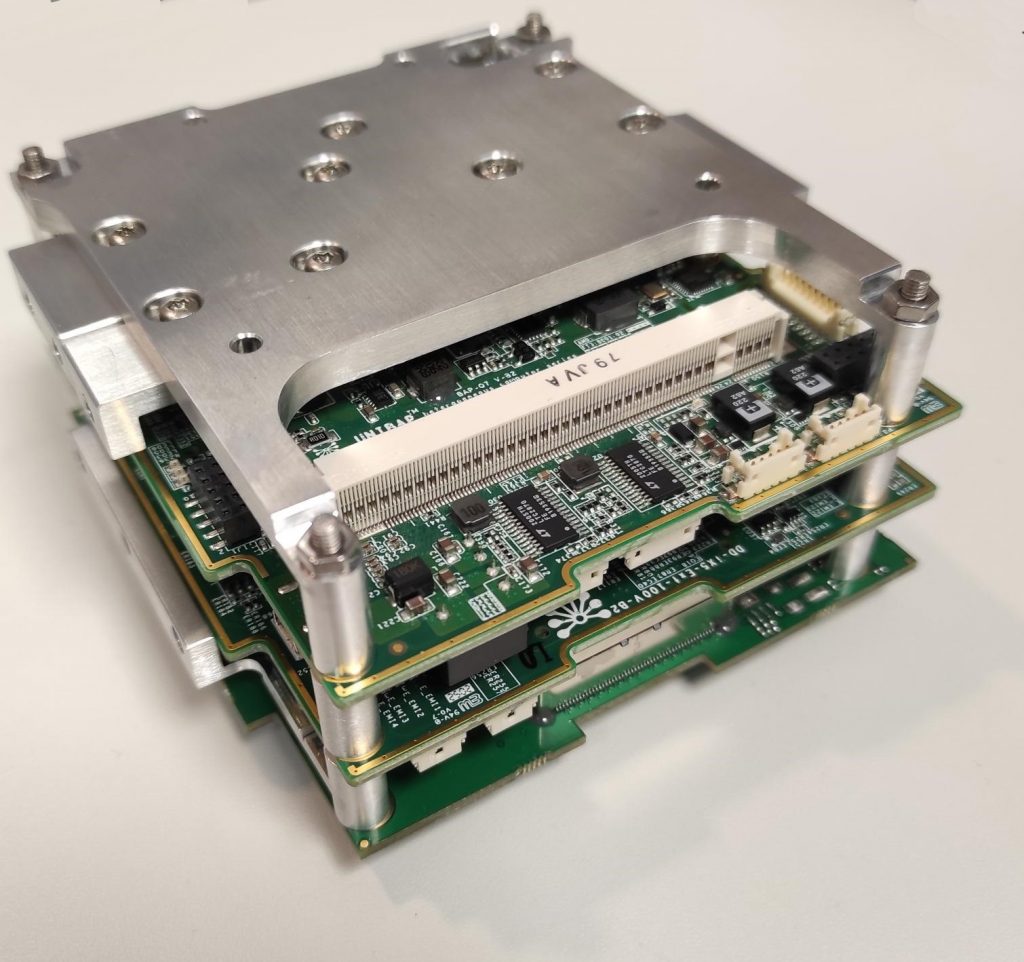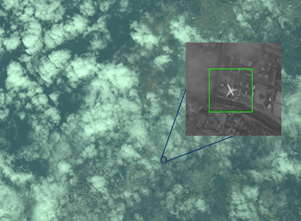Wild Ride Mission
Unibap's SpaceCloud solution is integrated into D-Orbits ION Satellite Carrier spacecraft launched on June 30, 2021.
SpaceCloud launched to orbit on June 30, 2021 from Cape Canaveral to validate future space data handling
We have now validated our cloud computing SpaceCloud® ecosystem in space. SpaceCloud hitched a ride to space on June 30, 2021 from Cape Canaveral on D-Orbit’s Wild Ride ION mission. The SpaceCloud demonstrations and tests to verify on-orbit timely data generation for Earth Observation applications will be carried out during the third mission phase for the first time in space.

Unibap’s mission patch
The SpaceCloud in-orbit validation on Wild Ride includes applications developed by Unibap and third parties for disaster monitoring, video and image data transfer optimization, space domain awareness, advanced image processing for precision agriculture, defence early warning and integrated satellite communication. The applications are selected to target the four highest-value markets segment of space data.

The main vehicle – “ION SCV003 Dauntless David”
ION Wild Ride is the world’s first space mission using radiation-tolerant advanced heterogeneous computing technologies featuring 4 Tera Operations per Second (TOPS) distributed over AMD CPU and GPU, Microsemi FPGA, and Intel Movidius Myriad X Vision Processing Unit. To this end, Unibap has delivered a flight model of the SpaceCloud iX5-100 and a full flight software solution for the mission. This will be used in-orbit by Unibap and D-Orbit to test and validate the SpaceCloud capabilities for providing commercial global geospatial high-value real-time information.
“Unibap’s solution, which addresses the issues of deploying high power, modern COTS processors in the harsh space environment meant they were exactly the partner we needed for this mission.”
– Simon Reid, COO, D-Orbit UK
Potential applications of SpaceCloud
- crop health monitoring
- yield forecasting
- environmental monitoring
- disaster/risk management
- surveying
- underwriting/claims processing
- risk management
- inventory monitoring
- and other functions from the global perspective of orbiting satellites
The ION Wild Ride mission is the first to leverage the SpaceCloud framework developed with the support of the European Space Agency to run powerful SpaceCloud applications. D-Orbit’s Nebula services, an on-demand, on-orbit cloud computing and data storage service will also be tested on the SpaceCloud iX5-100 solution on the mission.

Unibap iX5-100 flight model
A one-year space mission
The space mission, which will start on a 500 km Sun-synchronous orbit (SSO), will go through four phases during the one-year that the mission will last. The third phase, in-orbit demonstration, is devoted to the demonstration of payloads on the Wild Ride mission, including demonstration of SpaceCloud applications, services, and performance.
“The IOD with Unibap and D-Orbit will demonstrate a new concept of a single payload computer generating multiple data products in parallel, a method which can enable new mission concepts in the future”
– David Stenaari, On-Board Payload Data Processing Engineer, ESA
The SpaceCloud Apps that are tested on-orbit
Unibap have developed several applications to monitor the system performance and behavior in the space environment. This includes an application to measure the speed of detected vehicles in satellite imagery that uses the full performance of the SpaceCloud compute capabilities. This application is also part of the SpaceCloud educational and training package.
Unibap has partnered with US-based, SaraniaSat Inc to demonstrate high-performance onboard computing of advanced geospatial Earth Observation (EO) for rapidly processing, remote-sensing “Big Data” for extremely low-latency decision support. As previously announced Unibap and SaraniaSat have already successfully implemented the powerful L3Harris Geospatial ENVI® and IDL® software platform on SpaceCloud. The SaraniaSat-developed, customized AI/ML algorithms are used in space to demonstrate, near real-time, onboard tracking and geolocation of flying aircraft (sparse targets) within large, multi-spectral satellite scenes.

Output from Saraniasat app
- UK-based V-Nova is testing high-quality Video compressing techniques offering radical efficiency gains. Cuts transmission times by downloading high quality lower resolutions of the images first, followed by higher resolutions with no redundant data until the full resolution is available. This allows much faster access to the images on earth. V-Novas LCEVC and VC-6 compression methods are tested.
- UK-based Trillium is testing “Worldfloods” which have the ability to identify flooding and send down a flood map to emergency responders seconds after image acquisition. The Machine Learning SpaceCloud App is developed by the Frontier Development Lab (FDL), a partnership led by Trillium Technologies with the University of Oxford and ESA. Worldfloods offers a glimpse of a future where rapid insight is delivered almost instantaneously from space.
- Swedish ENEA’s Romanian subsidiary is testing compression of hyperspectral data using the global standard CCSDS 123.0-B-2. Hyperspectral data from space is a rapidly growing business and compression allow for faster downloading to customers. This demonstration is performed in collaboration with the European Space Agency.
- Irish-based Ubotica is testing an advanced ship detection application based on machine learning for low latency use cases leveraging the SpaceCloud resources including Intel Movidius Myriad X Vision Processing Unit.
- ESA is testing several applications, including robust compression of health data headers according to the upcoming standard CCSDS 124, and two scientific oriented applications (i.e radiation particle detection application, and a solar activity analysis application).
- Sweden-based 12G Flight Systems demonstrate SpaceCloud service compatibility with the common global satellite communication standard CCSDS protocol with PUSOpen®. This allow SpaceCloud to communicate with all major ground stations globally.